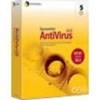Symantec 11281411 Administration Guide - Page 147
Best practice: Using the Virus Definition Transport Method and LiveUpdate together
 |
UPC - 037648327237
View all Symantec 11281411 manuals
Add to My Manuals
Save this manual to your list of manuals |
Page 147 highlights
Updating virus definitions files 147 Virus definitions files update methods Table 4-1 Virus definitions files update methods Method Description When to use it Intelligent Updater Intelligent Updater is a selfextracting executable file that contains virus definitions files. Use Intelligent Updater when you need to distribute virus definitions files updates to users who do not have active network connections. Note: 64-bit computers receive virus definitions files using LiveUpdate. All other methods of updating these files are not supported. Best practice: Using the Virus Definition Transport Method and LiveUpdate together You can use the Virus Definition Transport Method and LiveUpdate together. Using LiveUpdate allows for updates to the software components of Symantec AntiVirus. Using the Virus Definition Transport Method allows you to schedule and push virus definitions files updates from the Symantec System Center. In addition, you can use the Virus Definition Transport Method as an emergency system for distributing new virus definitions files quickly when the network is threatened by a new virus. Although the Virus Definition Transport Method is used more often, some large networks depend on LiveUpdate. These installations do not permit direct access to the Symantec site by a large number of servers and clients. One or more servers act as an internal LiveUpdate server to all of the other servers on the network, and in some installations, to all clients. Best practice: Using Continuous LiveUpdate on 64-bit computers To ensure that each managed 64-bit computer maintains the latest virus definitions, you can use Continuous LiveUpdate to require each computer to check for updates after a specified interval has expired. If you have more than one 64-bit computer on your network and you are using the Symantec System Center console, you can group these computers into a client or server group and manage the virus definitions from the console. If you are not using the console, you can enable this feature and set the interval on the client computer. See "Enabling and configuring Continuous LiveUpdate for managed clients" on page 164.















